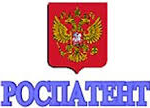There are quite a few upcoming opportunities to learn about the Patent Cooperation Treaty.
Of course a very good way to learn of upcoming learning opportunities about PCT is to check the PCT Seminar Calendar at the web site of WIPO. WIPO updates this calendar frequently.
Upcoming programs include:
- PCT lecture within the framework of the “Patent Administration: A Foundation for Success” course, September 13-14, San Diego, CA. (Patent Resources Group, yours truly presenting.)
- PCT Seminar, September 14, Chicago, IL. (John Marshall Law School.)
- PCT Seminar, September 21-22, Cary, NC. (North Carolina Bar Association, yours truly among the faculty.)
- PCT Seminar “Essential PCT”, October 3, Atlanta, GA. (PCT Learning Center, yours truly among the faculty.)
- Advanced PCT Seminar and Symposium on International Authorities, October 5, Washington, DC. (PCT Learning Center, yours truly among the faculty.)
- The Essential PCT, October 19, Milwaukee, WI. (PCT Learning Center.)
- ePCT Training Seminar, October 30, Irvine, CA. (PCT Learning Center.)
- ePCT Training Seminar, November 1, San Francisco, CA. (PCT Learning Center.)
- PCT Seminar, November 1, Boston, MA (Boston Patent Law Association.)
- PCT Boot Camp, November 2, Seattle, WA (PCT Learning Center.)
- ePCT Training Seminar, November 3, Seattle, WA. (PCT Learning Center.)
- PCT lecture within the framework of the “Patent Administration: A Foundation for Success” course, November 8-9, Philadelphia, PA. (Patent Resources Group, yours truly presenting.)

 Readers will recall (perhaps from
Readers will recall (perhaps from 

 Today the search fee paid by a US filer for the Russian patent office as International Searching Authority increases from $449 to $482. (I first reported this
Today the search fee paid by a US filer for the Russian patent office as International Searching Authority increases from $449 to $482. (I first reported this  Those who, like me, often record assignments at the USPTO are accustomed to the steps that are required to e-file in
Those who, like me, often record assignments at the USPTO are accustomed to the steps that are required to e-file in